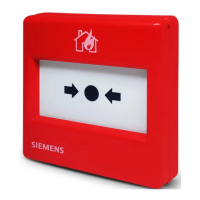22
fMRI User Guide
Figure 15. Counter that indicates time when to switch hands for finger tapping. The sequence starts with
displaying “B”, and will show the numbers of measurements counting up from 1 to 60 (total number of
measurements). Image (a) shows the counter switching to “A” when the measurement number goes to 11 (since
paradigm size is 10). In image (b), the counter switched back to “B” at measurement 21, and the sequence is now
scanning measurement 22 of a total of 60. As soon as either “B” switches to “A”, or “A” switches to “B”, the subject
should be asked to switch his/her finger tapping hand.
7. Once acquisition is completed, start the Neuro3D application from the “Applications” menu. Load the following
series of images, in the indicated order:
(a) t1_mpr_ns_sag_p2_iso (t1_mprage)
(b) act_MoCoSeries
(c) Eva_GLM
8. Move the cutting planes to visualize the motor cortex as shown in Figure 16. Distinct activation will be seen in
the motor cortex. (Note: The alpha value for statistical significance can be set in Visual->Functional Properties if
activation is not seen clearly – it is typically approximately ±4). Since our paradigm involved finger tapping with
both hands, one at a time, activation can be seen in both hemispheres of the brain.
9. Now, switch ON “Start Evaluation Mode” on the Neuro3D card.
A graph will be displayed in the bottom
left square of the Neuro3D card. In this mode, one can draw ROIs in the activation areas to look at their signal
variations through all the measurements. Draw two ROIs – one in the motor cortex of each hemisphere.

